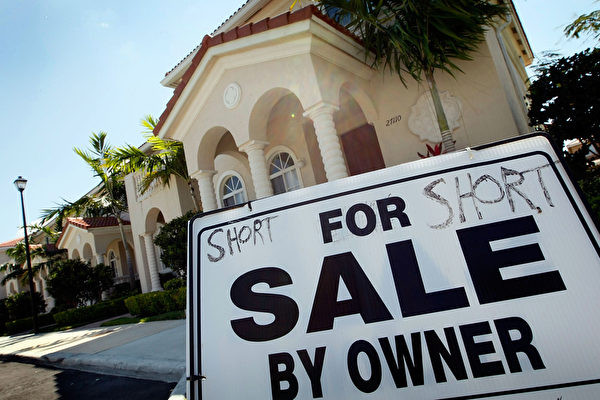In some parts of the United States, homeowners are facing a situation where their insurance and tax expenses have exceeded their mortgage payments, forcing some to either sell their homes or forego insurance coverage.
According to a report by The Wall Street Journal on Monday, December 23rd, the increasing losses from natural disasters and rising costs of home repairs have led insurance companies to raise premiums. Additionally, skyrocketing property prices have pushed property tax rates higher, reshaping the cost calculation for property ownership.
Many potential homebuyers have chosen to abandon their plans to purchase a home this year, resulting in existing home sales dropping to the lowest levels since 1995.
Data from the Intercontinental Exchange shows that in September, an average of 32% of monthly mortgage payments for single-family homes goes towards property taxes and insurance, the highest ratio since 2014.
In certain areas, the situation is even more severe. Data reveals that in five major metropolitan areas – Rochester and Syracuse in New York, Omaha in Nebraska, New Orleans in Louisiana, and Miami in Florida – at least a quarter of homeowners pay more than half of their monthly mortgage payments towards taxes and insurance.
These areas either have high property taxes, expensive home insurance, or both factors at play.
Nationwide, the proportion of monthly payments allocated to taxes and insurance exceeding half has surged to 9%, a sharp increase from less than 4% at the end of 2014.
The rising costs are putting significant pressure on homeowners, even those who purchased or refinanced their homes when mortgage rates were at historic lows, now feeling the increasingly burdensome and often unexpected financial strain.
Joshua Stewart, Director of Federal Policy and Advocacy at the non-profit housing organization Fahe, highlighted that elderly homeowners on fixed incomes are among the groups most vulnerable to these impacts.
When Michael and Landry purchased their home in New Orleans in 2015, their monthly property taxes, home insurance, and flood insurance totaled around $725.
Now, they are paying $2,448 per month for property taxes, windstorm and hail insurance, exceeding their mortgage payment. Additionally, they also shell out $2,000 annually for flood insurance and other disaster-related home insurance costs.
Currently, Landry is still working and able to afford these expenses, but once he retires at 70, these costs may force them to relocate.
A recent study by researchers from New York University, Rice University, and the Dallas Federal Reserve Bank highlighted that the increase in home insurance premiums significantly raises the likelihood of borrowers defaulting on their mortgages.
For homeowners with existing mortgages, purchasing home insurance is mandatory. However, some homeowners without mortgages opt out of insurance coverage, especially in areas experiencing significant premium hikes. Though this can save costs in the short term, the potential high costs of rebuilding after natural disasters might prove unsustainable.
According to an analysis by Sharon Cornelissen, Director of the Housing Division at the Consumer Federation of America, based on Census Bureau data, in 2023, around 6.8% of homeowners did not have home insurance, a decrease from 7.4% in 2021.
However, in some major metropolitan areas, the proportion of uninsured homeowners has been rising rapidly. For instance, in Miami, 21.2% of homeowners did not have insurance in 2023, up from 14.5% in 2021.

